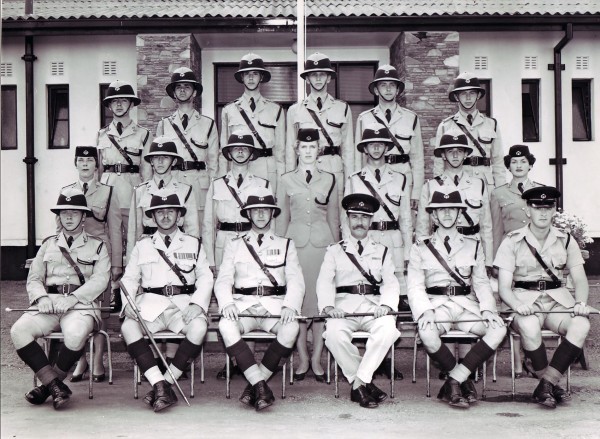This post is based on an article published by analyst blog Mikaprok, which looks into various aspects of the Commonwealth of Nations.
In the previous part of the look into the Commonwealth of Nations’ activities, a look was made into its diplomatic and military activities, in addition to how and why it was formed.
Apart from military affairs, and the diplomatic trap that the Commonwealth of Nations appears to be, its intelligence activities of are of notable interest.
There’s much speculation about what specifically they do, where they do it and how they do it.
The confirmed information is very limited, and very distorted.
The beginning of British intelligence began somewhat recently – in 1904, and it was called Committee of Imperial Defence.
It was an important ad hoc part of the Government of the United Kingdom and the British Empire from just after the Second Boer War until the start of the Second World War. It was responsible for research, and some co-ordination, on issues of military strategy.
Meaning that it would apply various approaches to its activity, which were not set out specifically in any form of doctrine or “rulebook,” thus the “ad hoc” part.
The original concept was to create a strategic vision defining the future roles of the two military services, the Royal Navy and the British Army, after the military reductions in the wake of the Boer War. However, no arrangements were made for it to formally pass on its conclusions to those with the ability to translate them into actions.
By 1914, the Committee had begun to act as a defence planning agency for the whole British Empire, consequently providing advice to the Dominions on occasion. It continued to perform such a role into the 1920s. It was effectively a peacetime defence planning system, one which only provided advice; formal authority remained with Ministers and service chiefs, which helped ensure the Committee’s acceptability to the existing bureaucracy.
Chaired by the Prime Minister, members were usually cabinet ministers, the heads of the military services, and key civil servants; Prime Ministers from Dominion countries were de facto members of the Committee in peacetime as well.
In 1947 it became the Defense Committee.
Returning to 1904, at the same time, the Indian Department of Criminal Intelligence was born.
It is reported that the Committee members combined all the power structures of the Empire into one structure with extraordinary powers based on the analysis of not very successful actions in both Anglo-Boer campaigns.
This is the root node of the network, from which the rest went to branch the other much more famous hubs: MI5, MI6 (1909), Foreign Office Defense (1921) and many others were born.
In addition to spies, the Committee always included representatives of the navy, army and the budget committee of Britain. In case of making important decisions.
In 1936, based on the proposal for self-regulation of the Dominions within the Empire, the Joint Intelligence Organization and its committee (JIC) were separated from the Committee.
JIC united all the colonial (at that time half-British) security services to quickly resolve issues.
In 1947, following the liberation of India-Pakistan, the Committee of Imperial Defense turned just into the Defense Committee.
The JICs were taken out of direct submission to the new configuration of the Committee and subordinated to MI5, i.e., to internal counterintelligence.
Incidentally, a representative of the CIA in London is regularly invited to the UK Security Committee.
The National intelligence structures began appearing in the former Dominions, which are joining the Commonwealth after World War II.
Africa began to be processed in 1948 to remove the threat of communism.
At a meeting of Commonwealth Prime Ministers that year, they raised the issue of establishing national intelligence centers.
The JIC took up the organization. n each former colony, two “referral” bureaus were set up: Defense Security Officers (DSOs) for the army and navy and Security Liaison Officers (SLOs) for spies.
It was assumed that the bureaus had to train the locals, “hand in the keys” and leave.
MI5 created the so-called “Office E” to receive the affairs of former employees and redirect them to their historical homeland.
In place of the former structures of the Commonwealth, they began to open the Federal Intelligence and Security Bureau (FISB), where locals should work exclusively.
It didn’t go exactly according to plan, however. After two years of work in central and southern Africa (the department of Rhodesia), the following was announced – out of 430 employees no more than 2 people were locals.
Before the declaration of independence of Zimbabwe in 1964, everything had to be organized, but there was nobody to be organized.
So the solution was to establish a Central Intelligence Agency, of sorts and then make a SLO, basically just fill it with MI5 staff.
Therefore, in 1968, the security services of the former dominions began to be quickly transferred to the CoN level.
Then everything supposedly settled down, but after the declaration of independence by the country, Bob De Keen, who was responsible for the security of Southern Rhodesia, continued to report to his old department, but in a new position.
Since the 70s, local cadres were recruited there, but no progress was being made at all.
Ultimately, the internal and external security bodies of the countries of the Commonwealth are governed by a structure in which MI5 is represented and in quite the significant role.
MORE ON THE TOPIC:







Yes Siree Bob, these aresholes have so much intelligence that the whole world hates them.
For a more organized and thorough study, have a look at this by Mathew Ehret;
https://www.fort-russ.com/2019/05/introduction-to-the-origins-of-the-deep-state-in-north-america/
https://www.fort-russ.com/2019/05/the-origins-of-the-deep-state-in-north-america-part-ii/
https://www.fort-russ.com/2019/05/origins-of-the-deep-state-in-north-america-part-iii/